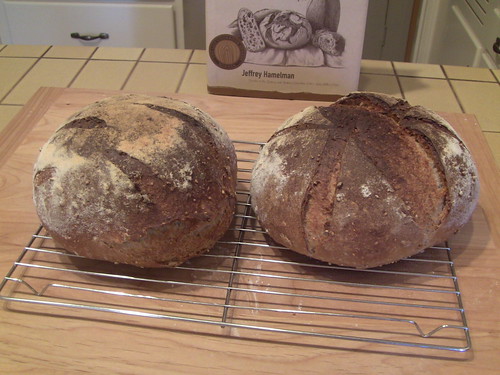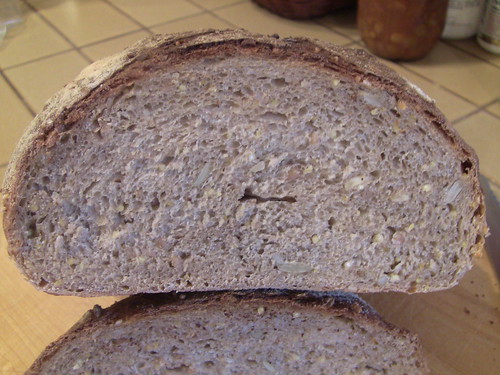
Help with bread from The Village Baker (Pain de Seigle sur Poolish)
I need some help with a recipe in Joe Ortiz's "The Village Baker" book, in particular his pain de seigle sur poolish (sponge-method rye bread). It seems to me his recipe measurment is way off. I like to convert his recipe from volume measurment to weight measurment. The first time I made this bread, I first measured almost everything in volume and then recorded the weight measurment. Turned out the dough was so wet (like 88% hydration!) I had to keep adding flour (about 2 cups additional) to make this even work with the slap-and-fold technique.
Here is Ortiz's original recipe on page 114:
The Poolish
2 packages (2 scant tablespoons, 1/2 oz.) active dry yeast
2 cups water
1 cup organic, unbleached white (or all-purpose) flour
1 cup rye flour
The Dough
1 1/2 cups warm water
All of the poolish from previous step
2 cups rye flour
2 cups organic, unbleached white (or all-purpose) flour
1 tablespoon salt
Glaze: 1 egg wisked up with 1 tablespoon milk
-----------------------------------
Here is what I recorded after weighing almost each volume measurment:
The Poolish
1 tablespoon active dry yeast (I think it is a misprint to say 2 packages of yeast is 2 tablespoons. 1 package is only 1/4 oz, so two packages is 1/2 oz which is way less than 2 tablespoons! First error in Ortiz's recipe above).
473g water
125g white flour
128g rye flour
The Dough
355g cups warm water
All of the poolish from previous step
256g rye flour
250g white flour
1 tablespoon salt
Glaze: 1 egg wisked up with 1 tablespoon milk
When I got to the dough stage (i.e., after incorporating the poolish) the dough was still unworkable. I had to incorporate an additional 2 cups of flour to make this workable even for the slap-and-fold method. Turns out the dough, before the additional 2 cups of water, was 108% hydration!! (Total flour = 801g, Total water = 823g, which equals 108% hydration). No wonder it was not workable!
So, can anyone help me figure out where Ortiz's recipe error is, and how do I correct it? I like the method of making this rye bread.










